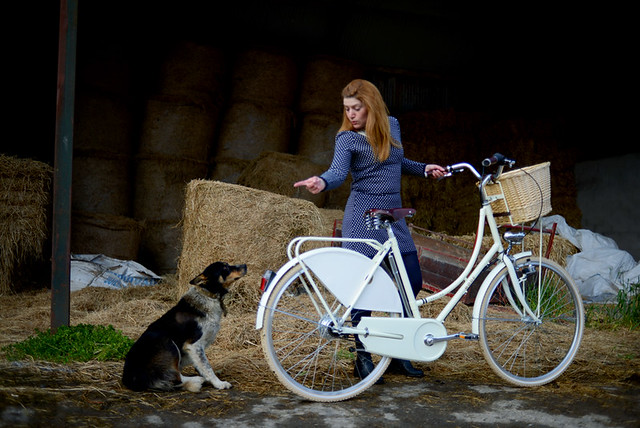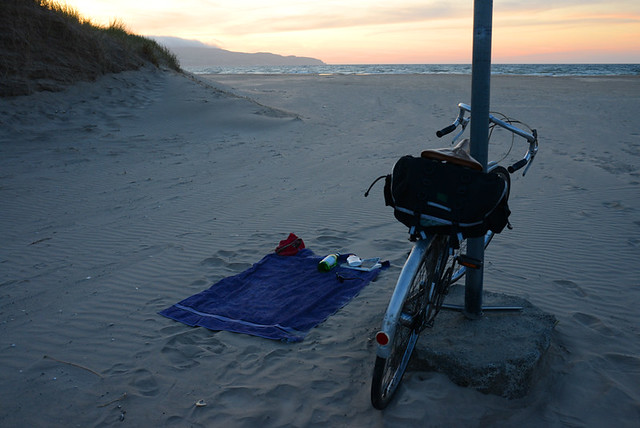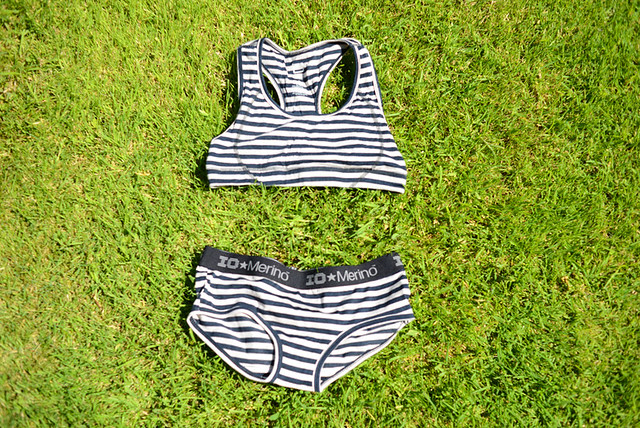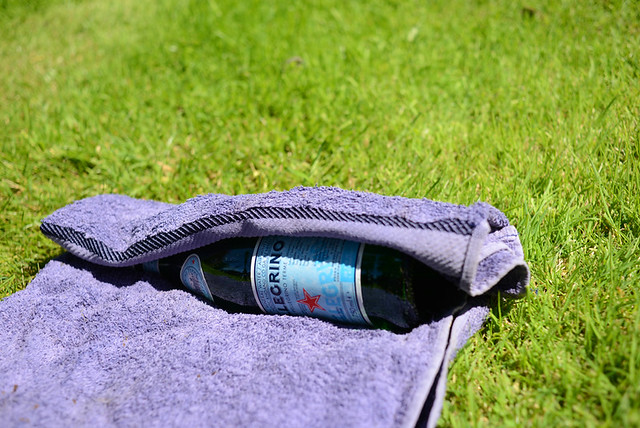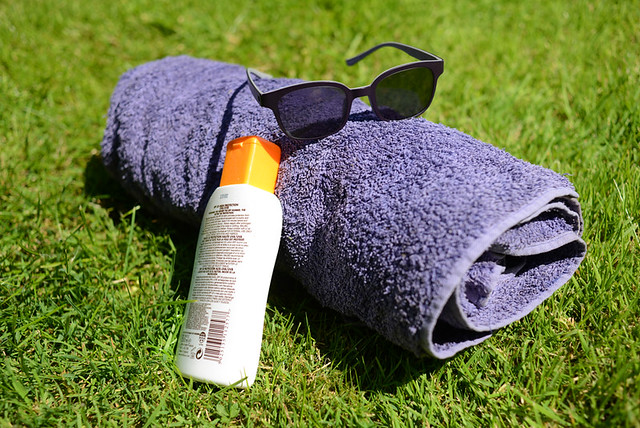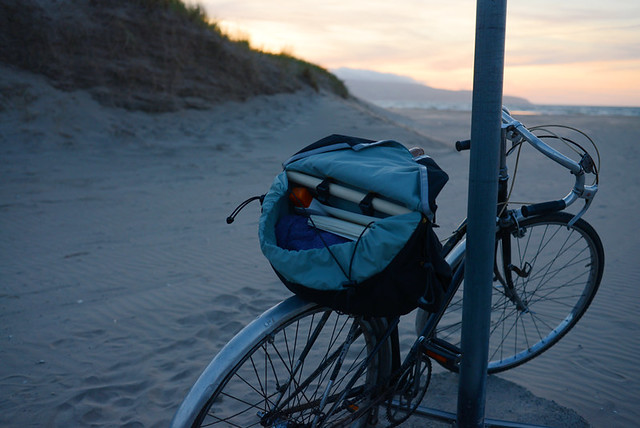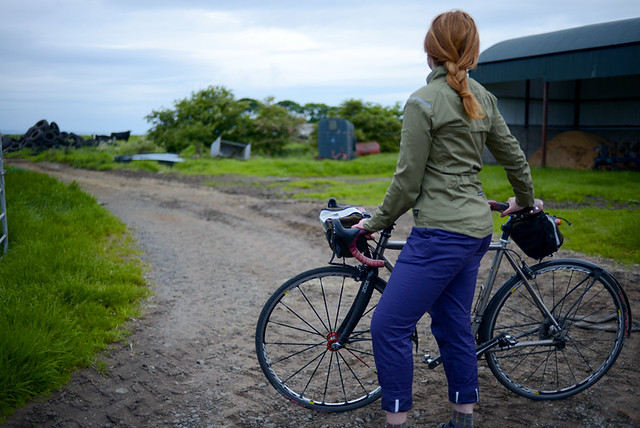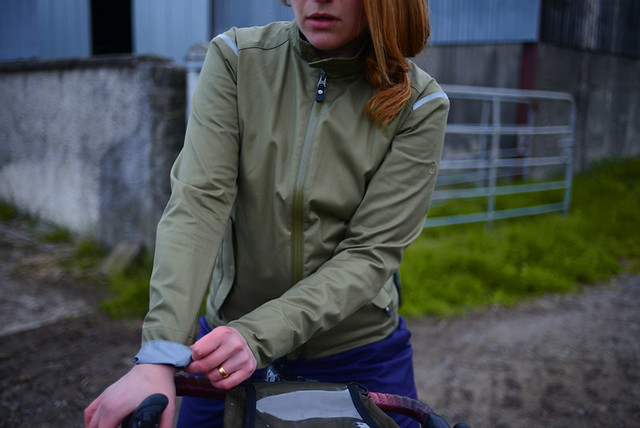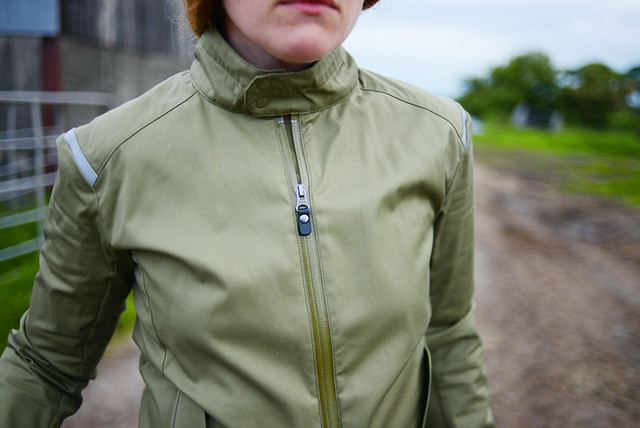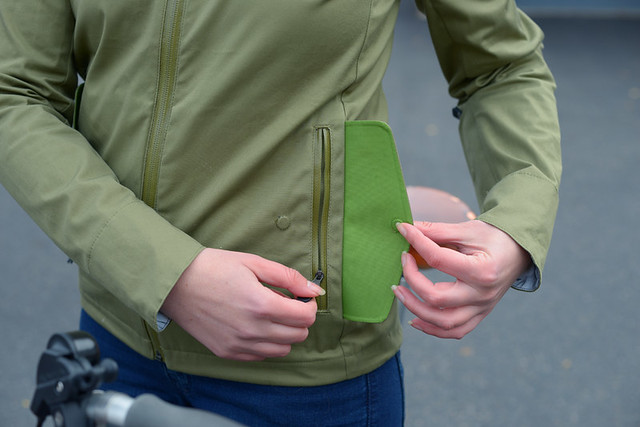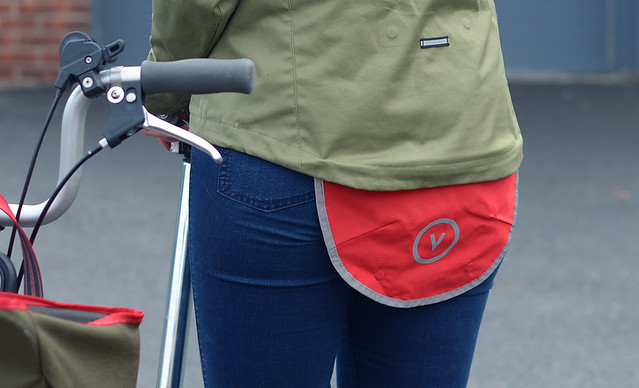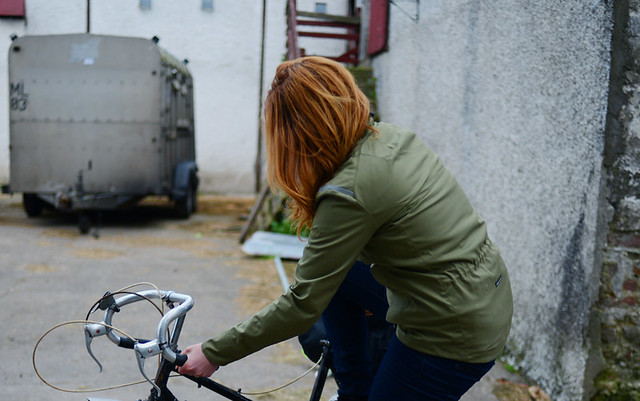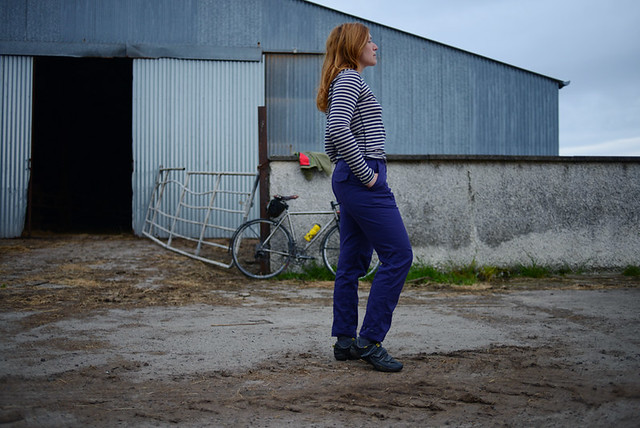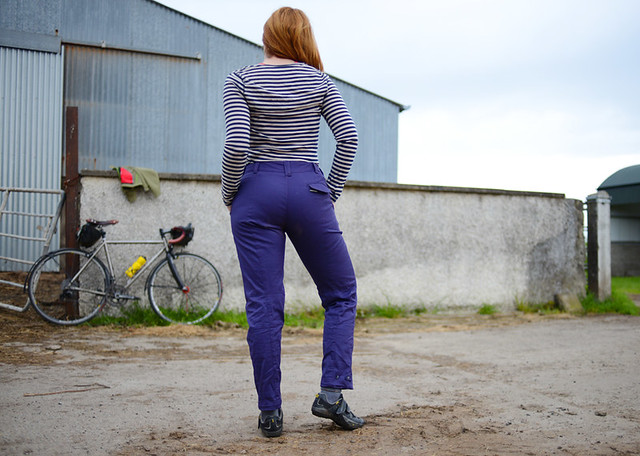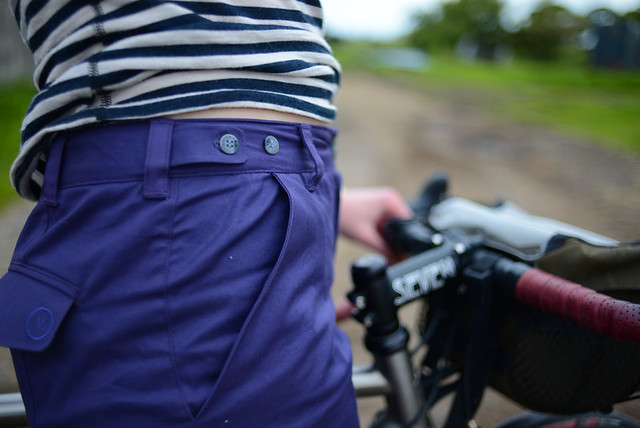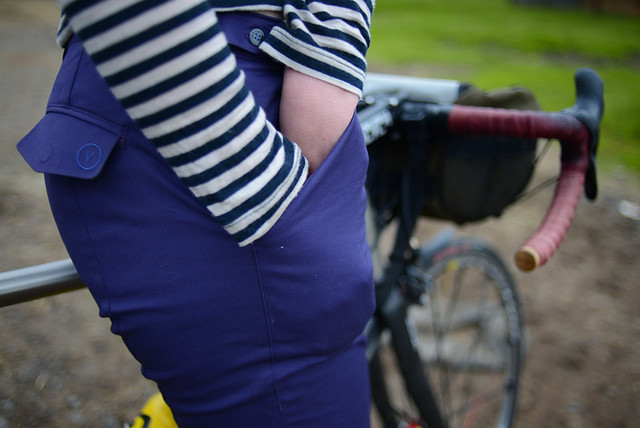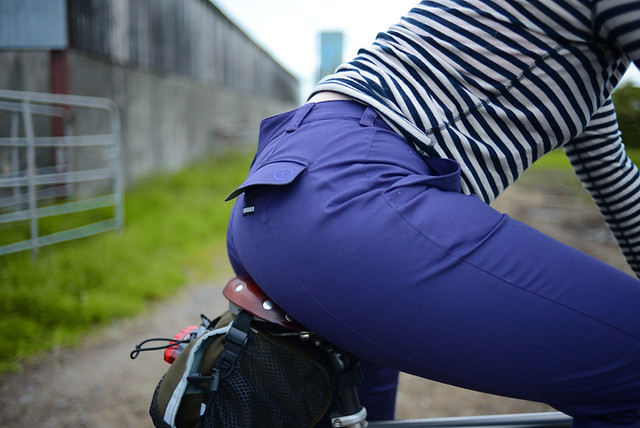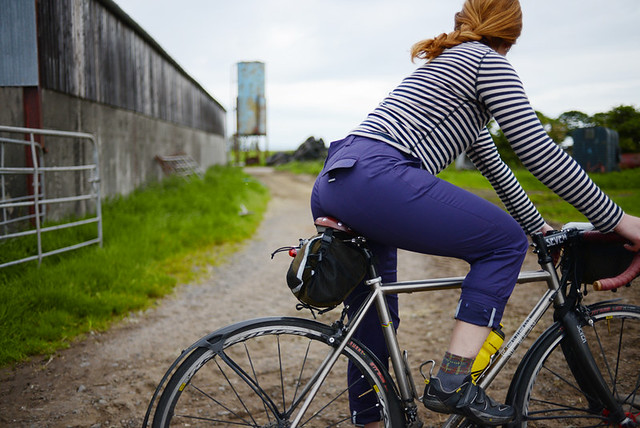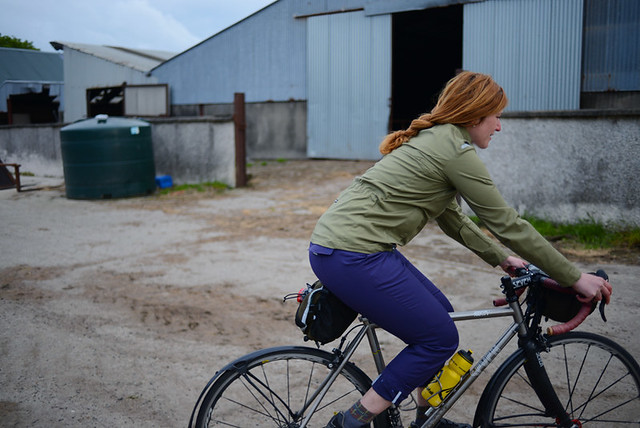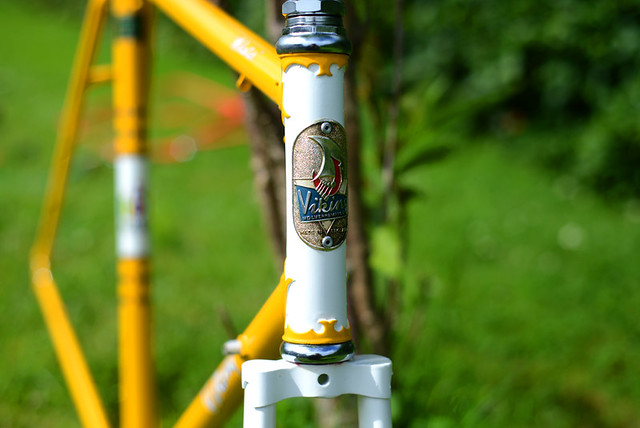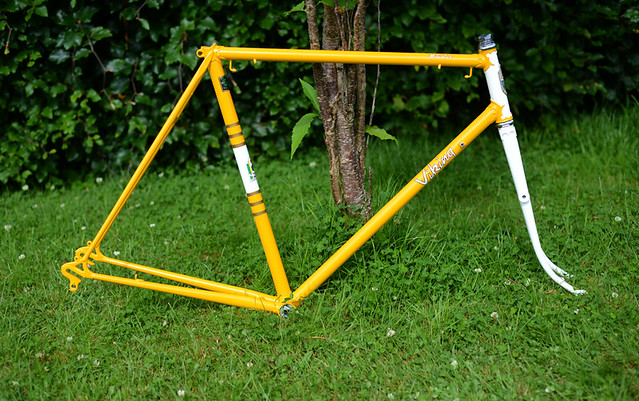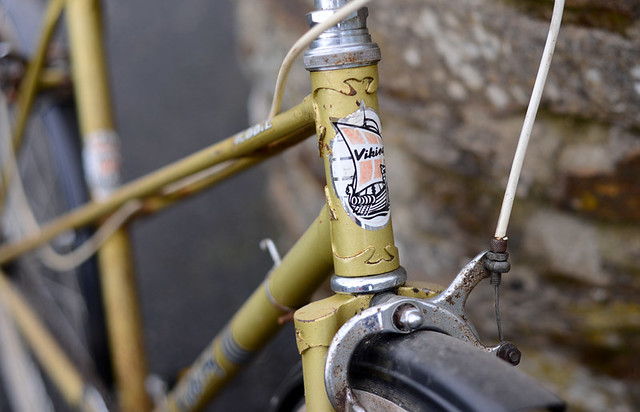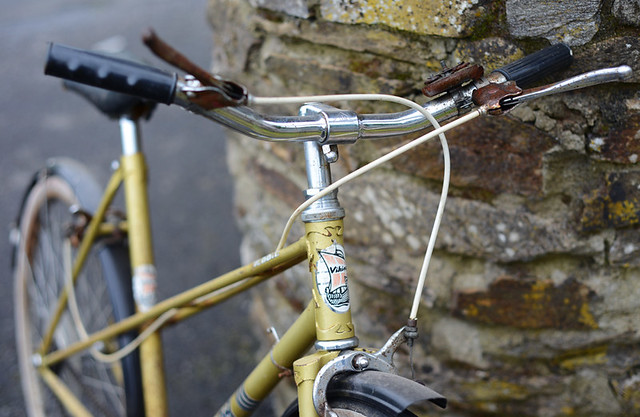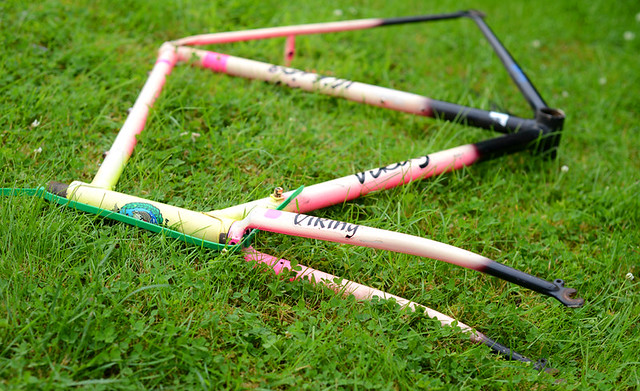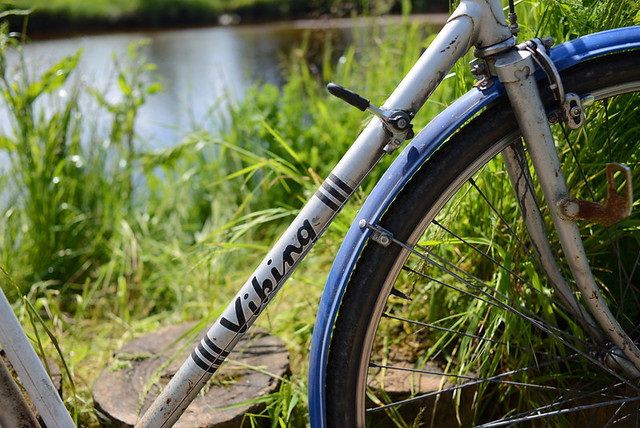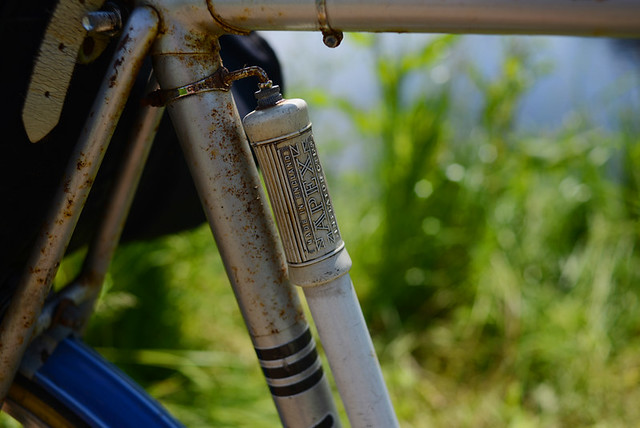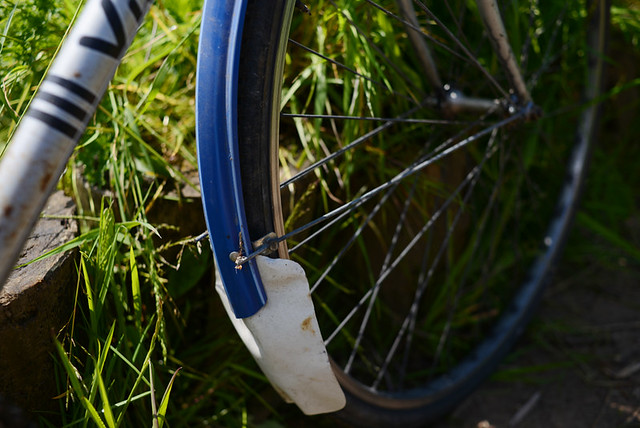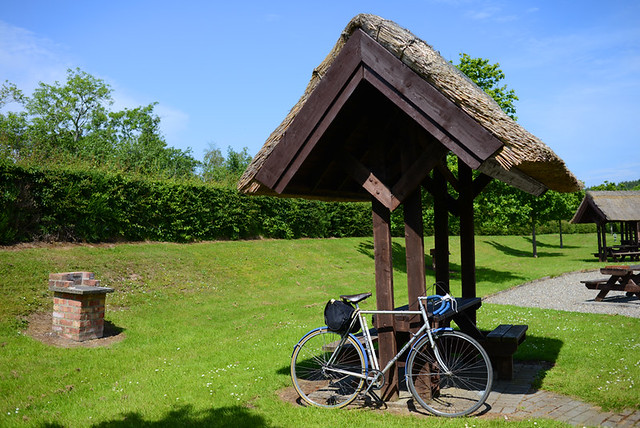When we think of rain gear for cycling, we tend to imagine technical, slippery garments designed for the very specific purpose of keeping dry in wet conditions. These garments do the job. And we can't wait to peel them off once the rain ends. But what of those of us who live and ride in climes where rain never really "ends" as such? where precipitation is the norm, and not a special occasion? Are we to resign ourselves to permanent clamminess under plasticky shells? Are we to shiver under the oppressive weight of soggy tweeds?
"Oh Vulpine. You with your quirky social media presence and your heady claims. I'll believe it when I try it for myself."
After months of wear, I remain unsure of how to describe the
Vulpine Rain Jacket. It is flattering and comfortable, it's kept me dry in the rain, and has all sorts of cycling-specific features that I'll list in a bit. But beyond that there is just something about it - can jackets have auras? - that makes for an overall effect beyond the sum of its parts. On the bike or off, I don't mind saying this jacket feels
fricking lovely.
The cotton fabric has a soft texture to it that is pleasant to the touch. The "Epic" treatment (read about it
here) really does make it water-repellant and resistant (as defined by keeping me dry for up to 4 hours in a downpour; haven't tried longer). Available in the military green shown here (which is more like a soft sage) or indigo, this jacket is designed for both dry and wet weather, and rated for temperatures 8-18°C. The fit feels true to size, I am a UK size 10 (US size 4) and the Small fits me well.
The tailoring I would describe as military meets biker, relying on a combination of darting and drawcords to give the jacket structure.
At the same time there is a drapeyness that softens the look, the flowy quality of the fabric an interesting contrast to the square shoulders and crisp standup collar.
Large zipper pockets with magnet-closure flaps have somehow been achieved without adding bulk to the waistline. A slew of additional interior and sleeve-side pockets offer more storage opportunities, again without compromising the flattering silhouette.
A removable hi-viz "splash guard" flap with reflective detailing can be released or stowed away (I never use it, but for those who like this sort of thing - it is indeed highly visible: "Like a baboon's bottom!" according to the delighted remark of a cycling companion).
A subtly placed vent over the shoulder blades provides ventilation. And extra length in the rear and in the sleeves provides good coverage even in a drop bar position, without looking out of place off the bike. Neither do the subtle reflective bits at the shoulders and sleeve cuffs look overly cycling-specific.
On the bike, the best thing about the jacket is that it does not pull or constrain in any way - the cut allows for excellent freedom of movement while appearing sleek and tailored. In cool weather the jacket regulates temperature adequately even on spirited rides, though I would not wear it in temps above 75°F.
Over the months I've tested it, I have found the Vulpine Women's Original Rain Jacket surprisingly versatile. I have worn it on commutes, on long photo expeditions and on road rides, as well as off the bike altogether. I have worn it with cycling clothes, with casual clothes, even
with dresses and high heels. In cool temperatures, I find the weight and breathability to be well suited for both casual and sporty cycling, regardless of whether it's raining or not. The one major drawback as far as versatility, is that the jacket is too bulky to stow away in a jersey pocket or even in a small handlebar/saddle bag, which limits its usefulness in a roadcycling context.
While the Vulpine Original Rain Jacket has many useful features to recommend it, in truth my fondness for it has just as much to do with its overall
je ne sais quoi. It is one of the more interesting articles of clothing I have worn in some time. It looks lovely, feels lovely, and has become a wardrobe staple.
Alas, I cannot say the same for the
Rain Trousers (available in the indigo shown here and in sahara - a light khaki). Ever on the lookout for a good pair of cycling-friendly trousers, I wanted to like these things, but they are just not for me. The fabric seems to be the same as that of the jacket, but somehow feels stiffer in use. As far as fit, perhaps the problem is my large behind, which makes these trousers sit all wrong - unflatteringly baggy around the abdomen and hips, but tight across the butt.
The high-waisted tapered leg design doesn't do me any favours either, giving my figure a dated, lumpy look. I can picture these trousers looking good on girls with willowy, boyish figures, creating curves where they do not already exist. But big-bottomed girls, beware!...
In theory, the adjustable waist and ankles of the Rain Trousers are useful features. However, for me they only exaggerate the unflattering fit mentioned earlier.
Ditto with the enormous front pockets, which tend to bunch up inside the front of the trouser legs.
The front pockets and the waistband at the rear flare out uncomfortably when I am on the bike, and while they don't constrain leg movements I can at times feel a pulling sensation suggesting an awkward fit.
But fit issues aside, there are other aspects of these trousers I am less than enthusiastic about. Firstly, while they are just as water-resistant as the Rain Jacket, they somehow don't feel quite as effective at temperature regulation, despite their 4-20°C rating. Perhaps it's the lack of vents or the fact that, unlike the jacket, they sit directly against the skin. But my legs get hot and clammy when cycling vigorously, even in cool weather. The fabric feels a bit too stiff for pedaling comfort as well. Maybe others will have a different reaction, but I cannot imagine wearing these trousers for anything but casual commuter spins.
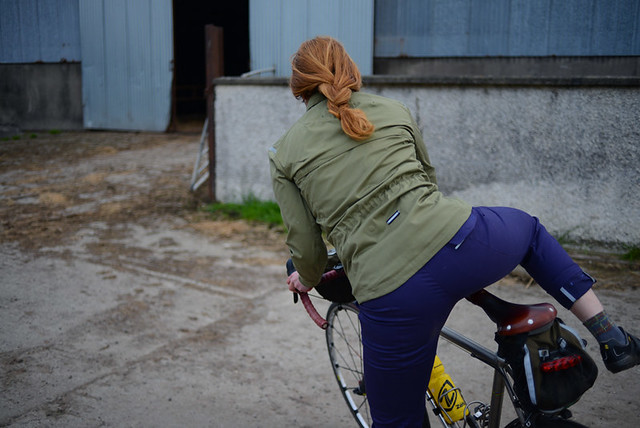
To balance out the critical comments with some positive ones, the Vulpine Rain Trousers did get something important right that other manufacturers can't seem to manage: They feature a nice roomy gusset at the crotch and no seams that dig into sensitive areas on the saddle regardless of position on the bike. The reflective bits at the cuffs are also nice, and I daresay these trousers look a bit more flattering as capris with the cuffs turned up.
As far as durability, I cannot fault either the jacket or trousers after several months of use. Aside from their impressive water-resistant properties, both garments have proven to be stain-resistant and even scuff-resistant. The jacket in particular I've been wearing quite a lot, and it hardly shows signs of use.
Vulpine designs their clothing to transcend the on/off the bike distinction, as well as to bridge the gap between sport and transport. These in of themselves are tricky endeavours. Add water-resistant properties and women-specific fit to the mix, and they're really asking for trouble! In light of this, to come up with a garment as cool and versatile as the
Women's Original Rain Jacket is commendable. And I hope my blunt feedback about the
Rain Trousers will not discourage Vulpine from continuing to offer their brave and unique designs.
Complete picture set of the jacket and trousers
here.
